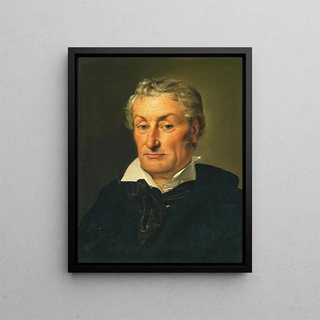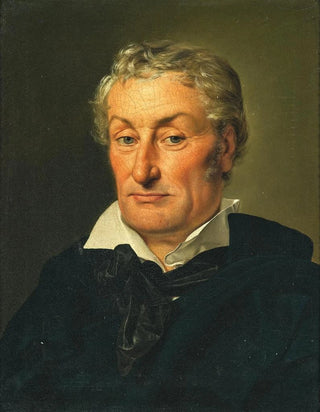Portrait of a gentleman with wavy white hair - Ferdinand Georg Waldmüller | Art print


View from behind

Frame (optional)
Ferdinand Georg Waldmüller's "Portrait of a Gentleman with White Wavy Hair" is an iconic artwork that transcends time and invites a profound exploration of the human soul. This 19th-century painting demonstrates the artist's skill in capturing not only the physical features of an individual but also their inner essence. The soft light caressing the gentleman's face, the meticulous details of his wavy hair, and the contemplative expression emanating from his gaze create an atmosphere that is both intimate and mysterious. Waldmüller, a master of art prints, manages to establish an emotional connection between the viewer and the subject, making this piece particularly captivating.
Style and uniqueness of the work
Waldmüller's style is characterized by a realistic approach and meticulous attention to detail. In this art print, the oil painting technique is executed with remarkable finesse, allowing textures of the skin and hair to be almost tangible. The color palette chosen by the artist, dominated by warm and natural tones, adds depth to the composition that immediately draws the eye. What sets this work apart is the way Waldmüller manages to infuse an inner life into his subject. The expression of the gentleman, both serene and pensive, encourages the viewer to ponder his personal history and reflections. This art print is not merely a physical representation but a psychological exploration, a true mirror of the soul.
The artist and his influence
Ferdinand Georg Waldmüller is often regarded as one of the masters of 19th-century Austrian portraiture. His work aligns with the realism movement, which aimed to depict everyday life and individuals with striking fidelity. Waldmüller, through his art prints, captured the essence of his era while standing out for his ability to render each subject unique. His influence extends beyond his time, inspiring many artists who followed in his footsteps. By emphasizing the psychology of portraiture, Waldmüller paved the way for a new understanding of the

Matte finish

View from behind

Frame (optional)
Ferdinand Georg Waldmüller's "Portrait of a Gentleman with White Wavy Hair" is an iconic artwork that transcends time and invites a profound exploration of the human soul. This 19th-century painting demonstrates the artist's skill in capturing not only the physical features of an individual but also their inner essence. The soft light caressing the gentleman's face, the meticulous details of his wavy hair, and the contemplative expression emanating from his gaze create an atmosphere that is both intimate and mysterious. Waldmüller, a master of art prints, manages to establish an emotional connection between the viewer and the subject, making this piece particularly captivating.
Style and uniqueness of the work
Waldmüller's style is characterized by a realistic approach and meticulous attention to detail. In this art print, the oil painting technique is executed with remarkable finesse, allowing textures of the skin and hair to be almost tangible. The color palette chosen by the artist, dominated by warm and natural tones, adds depth to the composition that immediately draws the eye. What sets this work apart is the way Waldmüller manages to infuse an inner life into his subject. The expression of the gentleman, both serene and pensive, encourages the viewer to ponder his personal history and reflections. This art print is not merely a physical representation but a psychological exploration, a true mirror of the soul.
The artist and his influence
Ferdinand Georg Waldmüller is often regarded as one of the masters of 19th-century Austrian portraiture. His work aligns with the realism movement, which aimed to depict everyday life and individuals with striking fidelity. Waldmüller, through his art prints, captured the essence of his era while standing out for his ability to render each subject unique. His influence extends beyond his time, inspiring many artists who followed in his footsteps. By emphasizing the psychology of portraiture, Waldmüller paved the way for a new understanding of the
12,34 €






